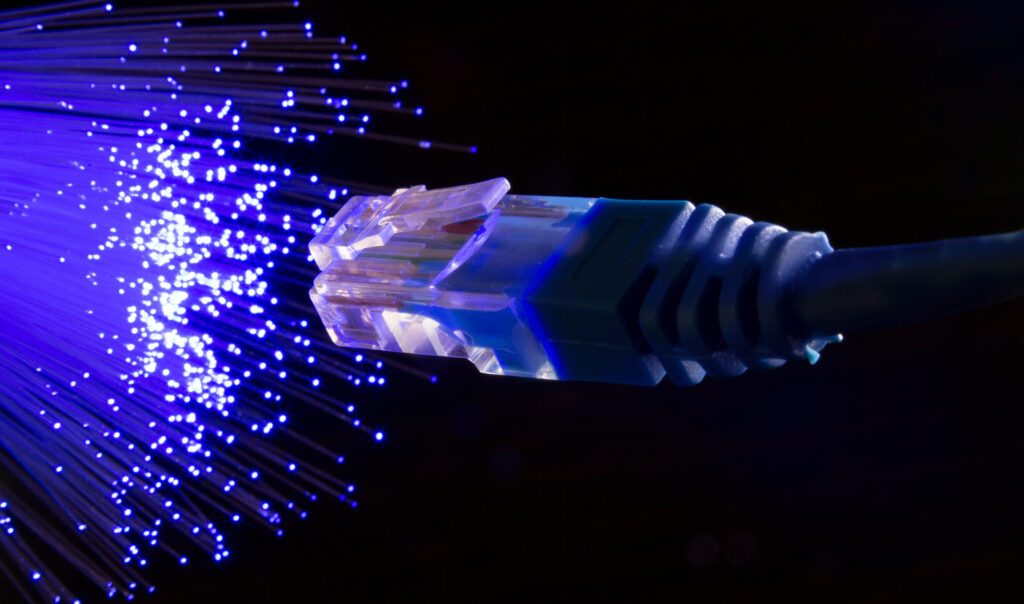In the evolving landscape of network infrastructure, the demand for higher speed, greater bandwidth, and increased efficiency is ever-growing. One technological advancement that stands out in meeting these demands is Base 16 fiber optic cabling. This innovative cabling solution is poised to revolutionize the way we think about data transmission and network performance. Here’s why Base 16 fiber optic cabling is considered the future of network infrastructure.

1. Unparalleled Data Transmission Speed
Base 16 fiber optic cabling is designed to support extremely high data transmission speeds. Traditional fiber optic cables, like Base 8 and Base 12, have served well in the past, but as data demands surge, their limitations become apparent. Base 16 cables can handle more data channels, which translates to significantly higher speeds. This is crucial for modern applications that require real-time data processing, such as high-frequency trading, virtual reality, and autonomous vehicles. With Base 16, networks can achieve previously unattainable speeds, thus future-proofing infrastructure against the relentless pace of technological advancements.
2. Enhanced Bandwidth Capabilities
The need for greater bandwidth primarily drives the shift from Base 8 or Base 12 to Base 16. Base 16 fiber optic cables allow for more efficient data transmission by reducing the amount of physical cabling needed to support higher bandwidths. This efficiency not only improves performance but also reduces congestion in data centers. As businesses and consumers generate more data than ever, the ability to handle vast amounts of information quickly and reliably is non-negotiable. Base 16 provides the bandwidth necessary to support data-intensive applications, such as 4K and 8K video streaming, cloud computing, and the Internet of Things (IoT).
3. Future-Proofing Network Infrastructure
Investing in Base 16 fiber optic cabling is a strategic move towards future-proofing network infrastructure. As technological advancements continue to accelerate, networks must be capable of scaling up without significant overhauls. Base 16 cables offer this scalability, allowing organizations to expand their network capacity seamlessly. This forward-thinking approach ensures that infrastructure investments remain relevant and cost-effective in the long term. By adopting Base 16, companies can avoid frequent and expensive upgrades, instead opting for a solution that will meet their needs for years to come.
4. Improved Efficiency and Reduced Latency
Latency is a critical factor in network performance, particularly for applications that require instantaneous data transmission. Base 16 fiber optic cabling minimizes latency by reducing the number of signal conversions and the physical distance data must travel. This results in faster, more efficient communication between devices and systems. In environments where milliseconds matter, such as financial trading platforms or remote surgical procedures, the reduced latency provided by Base 16 can make a significant difference in outcomes.
5. Simplified Network Architecture
Another advantage of Base 16 fiber optic cabling is its ability to simplify network architecture. Traditional network setups often require a complex web of cabling to achieve desired performance levels. Base 16 reduces this complexity by supporting higher data rates with fewer cables. This not only makes network management easier but also reduces the risk of errors and downtime associated with tangled or poorly organized cabling. Simplified architecture also means easier maintenance and troubleshooting, lowering operational costs and improving reliability.
6. Environmental and Space Efficiency
As sustainability becomes a priority, the environmental impact of network infrastructure must be addressed. Base 16 fiber optic cabling contributes to greener data centers by requiring less physical space and reducing power consumption. Fewer cables mean less raw material usage and less waste. Additionally, the improved efficiency of Base 16 cables leads to lower energy consumption, a critical consideration for large-scale data centers looking to minimize their carbon footprint.
7. Supporting Emerging Technologies
Emerging technologies like 5G, edge computing, and AI-driven analytics are placing unprecedented demands on network infrastructure. Base 16 fiber optic cabling is well-suited to support these technologies by providing the necessary speed, bandwidth, and reliability. As these technologies continue to develop, the ability of Base 16 to handle large volumes of data at high speeds will be indispensable. This positions Base 16 as a solution for today’s needs and a cornerstone for future technological innovations. Read Also: The Critical Importance of Healthcare Security Services
Conclusion
Base 16 fiber optic cabling represents a significant leap forward in network infrastructure. Its superior data transmission speeds, enhanced bandwidth capabilities, and future-proofing qualities make it an essential component for modern networks. Base 16 ensures that network infrastructure can keep pace with the rapidly evolving digital landscape by reducing latency, simplifying network architecture, and supporting emerging technologies. As the demand for faster, more efficient, and scalable networks grows, Base 16 fiber optic cabling will undoubtedly be at the forefront of this technological revolution, paving the way for a more connected and data-driven world.